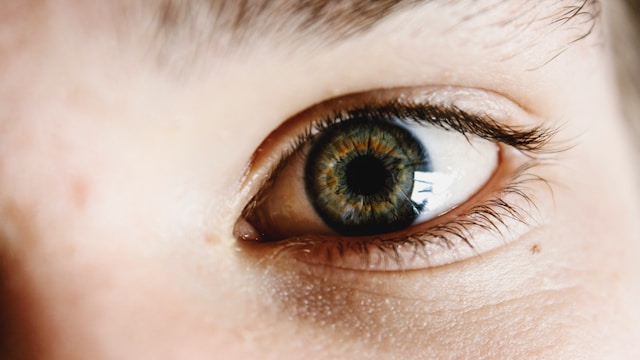In today’s digital age, we are constantly exposed to various sources of light that can potentially harm our eyes. From blue light emitted by screens to UV rays from the sun, protecting our eyes has become more important than ever. Prolonged exposure to these lights can lead to digital eye strain, vision problems, and long-term damage. Fortunately, some effective strategies and tricks can help safeguard your eyesight and minimize the impact of harmful lights. Whether you’re working on a computer, enjoying outdoor activities, or simply navigating daily life, implementing these practices can significantly contribute to maintaining healthy eyes for years to come.
Use Blue Light Filters
One of the most effective ways to protect your eyes from blue light exposure is to use blue light filters or screen protectors on digital devices. These blue light glasses are designed to reduce the amount of blue light emitted by screens, thereby alleviating eye strain and minimizing potential damage to the retina. Many smartphones, tablets, and computers now come equipped with built-in blue light filters or settings that adjust screen color temperature to warmer hues in the evening. Additionally, external blue light-blocking glasses can be worn while using digital devices for extended periods, providing an extra layer of protection against harmful blue light.
Understanding Harmful Lights
Before delving into protective measures, it’s essential to understand the types of harmful lights that can affect your eyes. Blue light, emitted by digital screens such as computers, smartphones, and tablets, has been linked to digital eye strain, sleep disruption, and retinal damage over time. UV rays, on the other hand, are invisible rays from the sun that can cause sunburn, premature aging of the skin around the eyes, and increase the risk of eye diseases like cataracts and macular degeneration. Being aware of these sources of light and their potential effects is the first step in developing a proactive eye protection strategy.
Take Regular Screen Breaks
To prevent digital eye strain and fatigue caused by prolonged screen use, it’s crucial to take regular breaks from staring at screens. Follow the 20-20-20 rule: every 20 minutes, look away from your screen and focus on an object at least 20 feet away for at least 20 seconds. This simple practice helps relax the eye muscles, reduce strain, and maintain healthy blood circulation to the eyes. Incorporating brief breaks into your screen time routine not only protects your eyes but also improves overall productivity and comfort throughout the day.
Adjust Lighting Conditions
Creating a well-lit environment that reduces glare and minimizes eye strain is essential for eye health. Position your computer screen to avoid glare from windows or overhead lighting. Use task lighting that is adjustable and directed away from the screen to provide adequate illumination without causing glare or shadows. Natural light is ideal for workspace environments, as long as it is diffused or supplemented with curtains or blinds to control brightness levels. By optimizing lighting conditions in your workspace and home, you can significantly reduce eye fatigue and discomfort associated with prolonged screen use.
Maintain Proper Eye Hygiene
Practicing good eye hygiene is essential for preventing infections and maintaining overall eye health. Avoid rubbing your eyes with dirty hands, as this can introduce bacteria and irritants that may lead to infections or inflammation. Use clean, lint-free cloths to wipe your glasses or contact lenses, ensuring they are free from dust, oils, or debris that could impair vision or cause discomfort. If you wear contact lenses, follow proper hygiene practices for insertion, removal, and cleaning to reduce the risk of eye infections. By maintaining cleanliness and care, you promote healthy eyes and reduce the likelihood of conditions that could compromise your vision.
Stay Hydrated
Proper hydration plays a vital role in maintaining eye moisture and preventing dry eye syndrome, a common condition exacerbated by screen use and environmental factors. Drink an adequate amount of water throughout the day to support overall hydration levels, which in turn helps maintain tear production and eye lubrication. Consider using lubricating eye drops or artificial tears if you experience dryness, irritation, or discomfort, especially after extended periods of screen time or in dry indoor environments. By staying hydrated and attending to your eye’s moisture needs, you can alleviate dry eye symptoms and promote lasting comfort for your eyes.
Follow a Balanced Diet
A balanced diet rich in vitamins and nutrients is essential for supporting eye health and minimizing the effects of harmful light on your vision. Incorporate foods high in antioxidants such as leafy greens, colorful fruits, and vegetables, which help protect against oxidative stress and inflammation in the eyes. Omega-3 fatty acids found in fish like salmon or flaxseeds can also promote healthy tear production and maintain optimal eye function. Consider taking nutritional supplements formulated with vitamins A, C, E, and zinc, which support overall eye health and may reduce the risk of age-related eye diseases. By nourishing your body with essential nutrients, you fortify your eyes against damage from harmful lights and promote long-term visual wellness.

Protecting your eyes from harmful lights is essential for maintaining long-term visual health and comfort in today’s technology-driven world. By understanding the impact of blue light and UV rays, and implementing practical strategies like blue light filters, regular screen breaks, and UV-protective eyewear, you can mitigate potential risks and safeguard your eyesight. Embrace habits that promote eye hygiene, hydration, balanced nutrition, and quality sleep to support overall eye health and resilience against environmental stressors. By prioritizing proactive eye protection measures, you ensure your eyes remain healthy, vibrant, and capable of navigating daily tasks with clarity and comfort for years to come.







